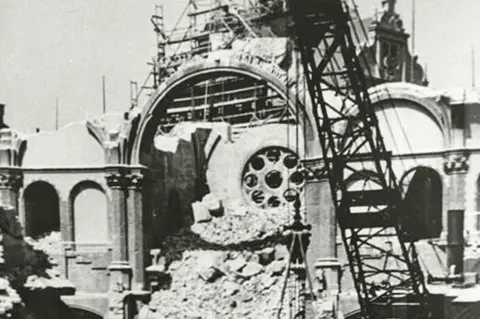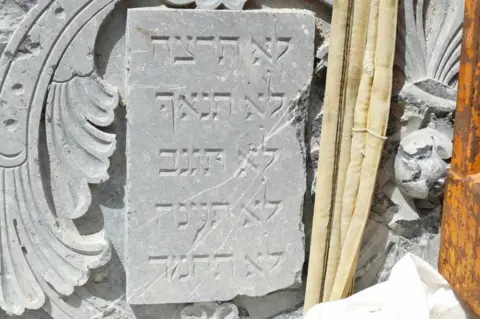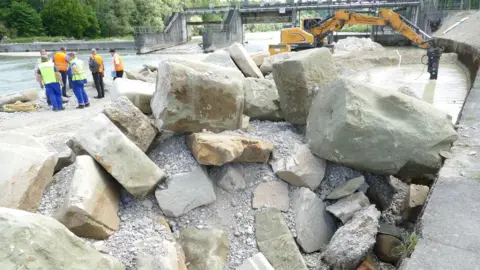Ruins found of Munich synagogue destroyed by Hitler
 Alamy
AlamyEighty-five years after Adolf Hitler ordered the destruction of Munich's main synagogue, construction workers have found rubble from the building in a nearby river.
They uncovered columns from the synagogue and a stone tablet showing some of the Ten Commandments.
The Jewish community and local figures are delighted with the discovery.
"We never thought we would find anything from it," said Bernhard Purin, head of Munich's Jewish museum.
There had been no sign of the building since it was torn down in June 1938, after Hitler demanded its removal as an "eyesore". Five months later, Jews, synagogues and Jewish-run businesses were attacked across Nazi Germany in the deadly November pogrom widely known as Kristallnacht.
"Yesterday I saw [the remains] for the first time and it was one of the most moving moments in 30 years of working in Jewish museums, especially seeing the plaque of the Ten Commandments not seen since 1938," Mr Purin told the BBC.
Rubble from the historic building is thought to have been submerged in the River Isar since it was used to rebuild a weir 11 years after World War Two.
 Jewish Museum Munich
Jewish Museum MunichThe stone tablet originally came from above the Ark (containing the Torah) on the eastern wall of the synagogue, which was one of Munich's most famous pre-war landmarks. The old site is now covered by a Karstadt department store.
Mr Purin said a little less than a quarter of the tablet was missing and it was the most significant discovery so far.
The Leonhard Moll building company that destroyed the synagogue had apparently stored the rubble on its site west of Munich until 1956.
Some 150 tonnes were then dumped in the river to renovate the big Grosshesseloher weir, mainly from the synagogue but also from buildings bombed during the war.
The 90-year-old head of the Jewish community in Munich, Charlotte Knobloch, was thrilled by the discovery as she had worshipped in the old synagogue as a girl before it was destroyed.
"These stones are part of Munich's Jewish history," she told the Münchner Merkur newspaper. "I really didn't expect fragments to survive, let alone that we would see them."
"The synagogue was very beautiful, like those synagogues in Budapest & Berlin," said Rolf Penzias, now 100, who was at a Jewish vocational school at the time the synagogue was torn down.
"We took the Sefer Torah out and they stored them somewhere. They dismantled the synagogue, they didn't burn it. They just put bulldozers in it and took it away," he said in testimony to the Association of Jewish Refugees' archive.
Munich Mayor Dieter Reiter told public broadcaster BR that finding the remains of such a magnificent building was a "stroke of luck." His deputy Katrin Habenschaden said it was the city's historic duty to make the discovery secure and return it to the Jewish community.
 Jewish Museum Munich
Jewish Museum Munich